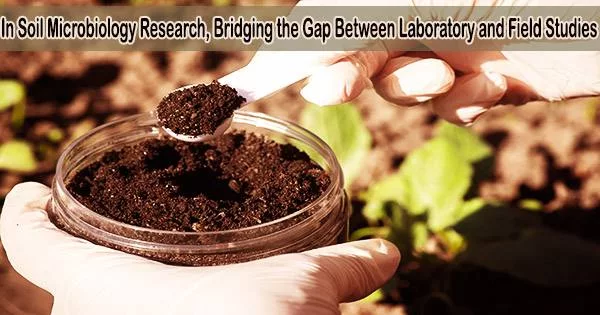Soil microbiology is the branch of microbiology that focuses on the study of microorganisms (such as bacteria, fungi, archaea, viruses, and protozoa) in the soil environment. These microorganisms play vital roles in soil fertility, nutrient cycling, organic matter decomposition, disease suppression, and plant growth.
Soil microbiology research increasingly depends on big data. As a result, investigations will no longer be conducted primarily in laboratories under carefully controlled conditions, but will instead be carried out in actual fields.
“It will naturally present challenges when you choose to scale up your research from laboratory to field trials and beyond. There is a big difference between laboratory and field experiments, and this can lead to inconsistent and even contrasting results, so it is important to bridge the gap between laboratory, field and model-based studies of microbial ecosystem functions,” explains tenure track researcher Ji Chen from the Department of Agroecology at Aarhus University.
From well-controlled conditions to uncontrolled
Experiments can be performed in a carefully controlled environment in the lab. When you move the experiments to ecosystems in fields, the same is not true. Here, the outcomes are impacted by changes in the weather, soils, and a wide range of other environmental factors.
“You could actually say that the laboratory experiments are limited because they ignore the wide range of environmental impacts that you would encounter in situ. So, there is a risk of contradictions between laboratory and field studies, which can ultimately mislead our development of models and projections,” says Ji Chen.
It will naturally present challenges when you choose to scale up your research from laboratory to field trials and beyond. There is a big difference between laboratory and field experiments, and this can lead to inconsistent and even contrasting results, so it is important to bridge the gap between laboratory, field and model-based studies of microbial ecosystem functions.
Ji Chen
Advances in molecular biology techniques, such as DNA sequencing and metagenomics, have revolutionized the field of soil microbiology, allowing researchers to explore the microbial diversity and functions in soil more comprehensively.
In order to obtain the most reliable results, it is critical that soil microbiology research be scaled up from labs to real ecosystems. However, according to Ji Chen, there are major challenges:
“Scaling up is not just about making the experiments bigger, it requires us as researchers to investigate and work out what microbiological processes and relationships are going on in the soil at every level when we can’t control all the environmental influences.”
The differences between laboratory and field results
A major difference between the different experiments is the soil. In laboratory investigations, the soil is disturbed. It has been transported and dug up, and in some cases, treated as well. This may result in modifications to microbial communities and nutrient cycles that do not always correspond to those found in field soils that have not been disturbed.
“The duration of the study can also affect the results, as short-term laboratory incubations may give different predictions than long-term laboratory studies or field-based observations,” says Ji Chen.
According to the researchers, these variations in research findings may have an impact on models used to estimate the carbon and nutrient cycles of soils as well as greenhouse gas emissions.
“Ultimately, in other words, these discrepancies can affect the development of policies based on scientific evidence. This is a challenge we face as environmental researchers because our results can be used to inform policy makers on climate-smart and resource-efficient ecosystems,” says Ji Chen, who points out that “the lack of knowledge on upscaling soil microbiology from laboratory to ecosystems should motivate more interdisciplinary collaboration across experimental, observational, theoretical and modeling research.”
















